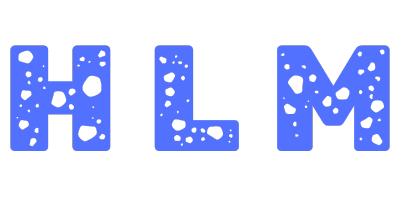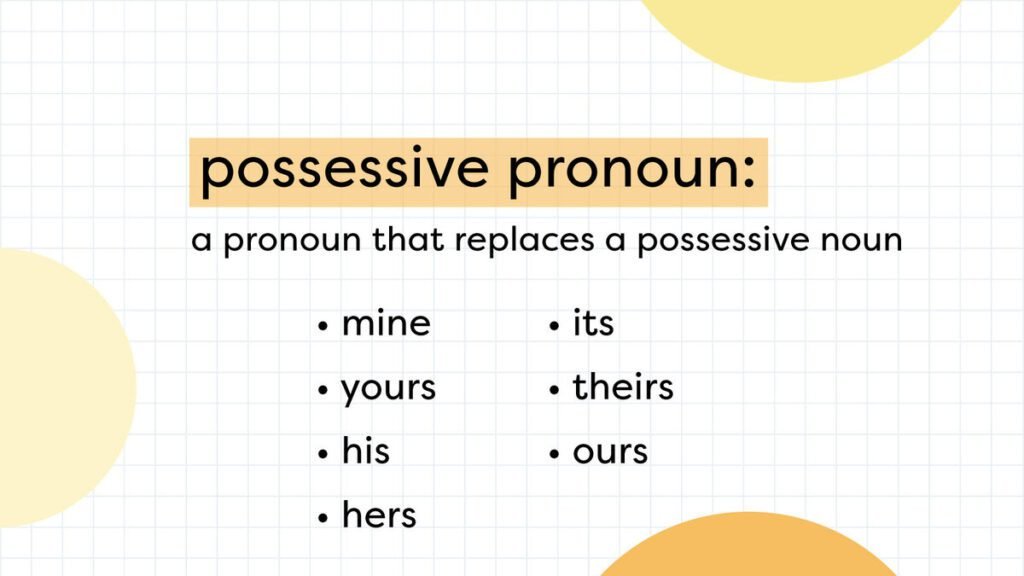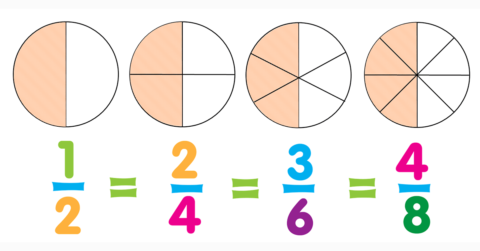What Is a Pronoun? A Comprehensive Guide to Pronouns, Their Types, and Usage in English Grammar
Welcome to our ultimate guide on pronouns! If you've ever wondered "What is a pronoun?" or "What does pronoun mean?"—or if you need examples, definitions, and explanations for various types of pronouns such as personal, reflexive, relative, demonstrative, indefinite, and more—then you’re in the right place.
In this guide, we cover a wide range of topics including:
- Basic definition: What is a pronoun?
- Different types of pronouns and their examples
- Common questions like "what is a reflexive pronoun", "what are personal pronouns", and "what is a relative pronoun"
- How pronouns function in sentences and replace nouns
- Special cases such as intensive pronouns, possessive pronouns, and interrogative pronouns
- Clarifications on common misconceptions and usage in everyday language
Whether you are a student, teacher, writer, or language enthusiast, this guide will help you understand the role of pronouns in effective communication.
1. Introduction to Pronouns
A pronoun is a word that takes the place of a noun or noun phrase in a sentence. By substituting for a noun, pronouns help to avoid repetition and make communication smoother. For instance, instead of saying "Jennifer went to Jennifer’s car because Jennifer forgot Jennifer’s keys," we can say, "Jennifer went to her car because she forgot her keys."
This guide will answer common questions such as:
- What is a pronoun?
- What does a pronoun mean?
- What are personal, possessive, reflexive, and relative pronouns?
- How do you use pronouns in a sentence?
- What are some examples of pronouns?
2. Definition of a Pronoun
In grammatical terms, a pronoun is defined as a word that substitutes for a noun or a noun phrase. An easy definition is: “A pronoun is a word that replaces a noun to prevent repetition and to simplify sentences.”
For example, in the sentence “Alex said that Alex would come later,” the name “Alex” can be replaced with the pronoun “he” or “she” (depending on gender) to say, “Alex said that he would come later.”
3. Types of Pronouns
Pronouns in English can be categorized into several main types. Here’s an overview:
-
Personal Pronouns: These refer to specific people or things. They are divided into:
- Subject pronouns: I, you, he, she, it, we, they
- Object pronouns: me, you, him, her, it, us, them
- Possessive Pronouns: Indicate ownership. Examples: mine, yours, his, hers, ours, theirs.
- Reflexive Pronouns: Refer back to the subject of the sentence. Examples: myself, yourself, himself, herself, itself, ourselves, yourselves, themselves.
- Relative Pronouns: Introduce clauses that modify nouns. Examples: who, whom, whose, which, that.
- Demonstrative Pronouns: Point to specific items. Examples: this, that, these, those.
- Indefinite Pronouns: Refer to non-specific persons or things. Examples: anyone, everybody, someone, something, nothing.
- Interrogative Pronouns: Used to ask questions. Examples: who, whom, whose, which, what.
- Intensive Pronouns: Used to emphasize a noun or pronoun, e.g., "I myself did it."
Understanding the various types of pronouns is essential for mastering English grammar and effective communication.
4. Pronoun Examples in Context
Let’s look at some examples that demonstrate how pronouns are used:
- Personal Pronoun: Instead of "Maria loves Maria's dog," we say "Maria loves her dog."
- Possessive Pronoun: Instead of "This book belongs to John," we say "This book is his."
- Reflexive Pronoun: "The cat cleaned itself." Here, "itself" refers back to "the cat."
- Relative Pronoun: "The student who studied hard passed the exam." The word "who" connects the clause to "the student."
- Demonstrative Pronoun: "This is delicious." The pronoun "this" indicates a specific item.
- Indefinite Pronoun: "Everyone is welcome." Here, "everyone" is non-specific.
- Interrogative Pronoun: "What is your name?" The word "what" asks for information.
- Intensive Pronoun: "I did it myself." The word "myself" emphasizes that I, and no one else, did it.
5. What Does "Pronoun" Mean?
The term “pronoun” originates from the Latin word pronomen, which means “in place of a noun.” In practice, pronouns are used to substitute for nouns in order to avoid repetition and to streamline sentences.
For instance, instead of repeatedly using the noun "the teacher," one might use the pronoun "she" or "he." This makes communication more efficient.
6. Special Pronoun Types and Their Uses
In addition to the basic categories, here are some special cases and nuances in pronoun usage:
- Relative Pronouns: These include "who," "whom," "whose," "which," and "that." They introduce clauses that provide additional information about a noun.
- Interrogative Pronouns: Used to ask questions, e.g., "Who is coming?" or "What is that?"
- Intensive Pronouns: Although they share the same forms as reflexive pronouns, their role is to add emphasis, as in "I did it myself."
Some common queries include “what is a relative pronoun,” “what is a reflexive pronoun,” and “what are intensive pronouns.”
7. Pronoun Usage: Common Questions and Misconceptions
As you study pronouns, you may encounter questions such as:
- What is a proper pronoun? The term “proper pronoun” is not standard in grammar; however, some may confuse it with proper nouns. Remember, pronouns replace nouns, whether they are common or proper.
- Do pronouns have different forms for subject and object? Yes. For example, "I" is a subject pronoun, while "me" is its object form.
- What do pronouns replace? Pronouns replace nouns or noun phrases in order to avoid repetition.
- What is the difference between "reflexive" and "intensive" pronouns? Reflexive pronouns refer back to the subject (e.g., "himself"), while intensive pronouns emphasize the subject (e.g., "I myself did it").
8. Pronouns and Their Role in Effective Communication
Pronouns play a critical role in language by reducing redundancy and making our sentences smoother and less cumbersome. They help maintain clarity and fluidity in conversation and writing.
For example, replacing a repeated noun with a pronoun can turn "Maria said that Maria would come to Maria’s office" into "Maria said that she would come to her office," which is much easier to read and understand.
9. Pronoun Challenges in Language Learning
For non-native speakers, pronouns can be particularly challenging because many languages have different systems for pronoun usage. For instance, in Spanish, personal pronouns include "yo," "tú," "él," "ella," and so on. In English, the variety of forms (subject, object, possessive, reflexive, etc.) can be confusing.
Tools like online grammar exercises, interactive quizzes, and language apps can help learners practice and master pronoun usage.
10. Pronouns in Different Contexts: Formal vs. Informal
The use of pronouns can vary depending on the context. In formal writing or professional communication, careful use of pronouns ensures clarity and respect. In informal conversation, pronoun use is often more relaxed.
For example, in a formal report you might write, "The manager stated that he would review the document," whereas in casual speech, one might simply say, "He said he’d check it out."
11. Pronouns in Advanced Grammar: Special Cases
In advanced grammar studies, you may encounter terms and cases such as:
- Nominative (Subject) vs. Accusative (Object) Pronouns: The difference between "I" (subject) and "me" (object) is essential in constructing correct sentences.
- Possessive vs. Possessive Adjectives: For example, "mine" (possessive pronoun) versus "my" (possessive adjective).
- Interrogative Pronouns: Their use in forming questions, such as "Who is there?" or "What did you say?"
Understanding these nuances deepens your knowledge of English grammar and improves both your writing and speaking.
12. Common Queries About Pronouns
Here are answers to several frequently searched questions about pronouns:
- What is a pronoun? A pronoun is a word that replaces a noun or noun phrase to avoid repetition.
- What does pronoun mean? It means a word used in place of a noun.
- What is a relative pronoun? A relative pronoun introduces a clause that describes a noun; examples include who, whom, whose, which, and that.
- What are personal pronouns? Personal pronouns refer to specific persons or things; examples are I, you, he, she, it, we, they.
- What is a reflexive pronoun? Reflexive pronouns refer back to the subject (e.g., myself, yourself, himself).
- What is a demonstrative pronoun? These pronouns point to specific things, such as this, that, these, and those.
- What are indefinite pronouns? Indefinite pronouns refer to non-specific people or things (e.g., someone, anyone, nothing).
13. Pronoun Usage in Practice
Let’s look at a practical example to see how pronouns make communication smoother:
Original: "Jordan forgot Jordan's book because Jordan was in a hurry." With Pronouns: "Jordan forgot his book because he was in a hurry."
This transformation shows how pronouns prevent redundancy and improve clarity.
14. The Role of Pronouns in Effective Communication
Pronouns are essential to achieving clear, concise communication. They allow speakers and writers to avoid unnecessary repetition, making language more fluid and natural. Understanding how and when to use different types of pronouns is a key skill in both written and spoken English.
15. Conclusion and Final Thoughts
In summary, a pronoun is a word that replaces a noun or noun phrase to make communication more efficient and less repetitive. In this guide, we defined pronouns, discussed their various types—including personal, possessive, reflexive, relative, demonstrative, indefinite, interrogative, and intensive—and provided examples of how they are used in everyday language.
Whether you're a student, a writer, or simply curious about grammar, understanding pronouns is essential for mastering effective communication. We hope this comprehensive guide has answered your questions—such as "what is a pronoun," "what does pronoun mean," and "what are some examples of pronouns"—and provided valuable insights into their proper usage.
Thank you for reading our guide on pronouns. Keep exploring, keep learning, and enjoy the journey to better communication!



